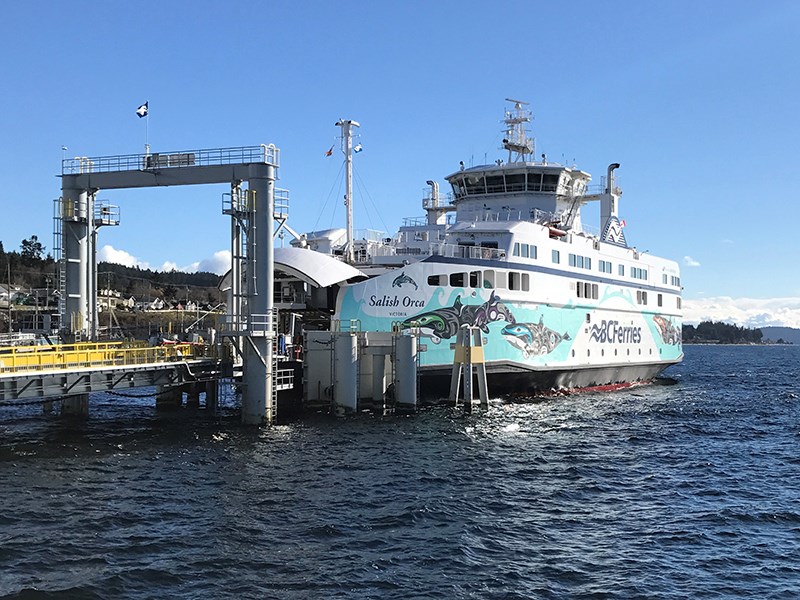Increased summer tourism traffic and a smaller vehicle capacity have put BC Ferries’ newest vessel to the test.
July 2017 traffic numbers for the Comox-Powell River route show a 1.9 per cent increase in traffic over July 2016 and a 5.5 per cent increase over July 2015.
As vehicle traffic has increased, so too has the number of overload sailings with cars left behind.
According to BC Ferries’ traffic statistics, in July 2015 fewer than one per cent of sailings were overloaded. By this July, that number had risen to five per cent.
Powell River Sunshine Coast MLA Nicholas Simons said it is obvious that overloads have gone up as result of the reduction of route’s vehicle capacity.
"People were saying this would happen,” said Simons. “We've got a new vessel that has a number of problems, not least of which is that its capacity is insufficient for our heavy traffic periods.”
BC Ferries spokesperson Deborah Marshall said there has been about a three per cent increase in traffic across the fleet, including Powell River routes.
“We’re seeing a lot of tourism traffic this summer,” said Marshall. “It’s great news for everyone here on the island and coastal communities.”
July’s traffic is the first test for new vessels to see if BC Ferries’ gamble on smaller boats that run more economically will pay off during the busiest time of the year. Salish Orca’s vehicle capacity is about 30 fewer than Queen of Burnaby could load.
Simons said it was cost-cutting that led to decisions to reduce the number of sailings on the route in 2014 and build the smaller vessel.
“You hope that decisions are made to improve public mobility and access and not just what is going to save the most money,” he said.
Marshall said Salish Orca carried 7,548 vehicles and had an overload of 101 total out of Comox for the month of July. Out of Powell River, July saw the ferry carry 7,172 vehicles with 63 overloads, she added.
Marshall said Salish Orca is handling its first summer well, despite the fact that the ferry corporation is still ironing out some electrical issues with the ship that crop up from time to time.
Northern Sunshine Coast Ferry Advisory Committee chair Kim Barton-Bridges said the comparison between Queen of Burnaby’s 168-vehicle capacity and Salish Orca’s capacity of 138 vehicles may not be fair to make.
“The effective capacity of the Burnaby is actually quite close to that of the Salish Orca,” said Barton-Bridges.
Marshall said Salish Orca’s capacity is only “slightly reduced” compared to Queen of Burnaby. Barton-Bridges said if the ship is dealing with consistent overloads it is an indication that more runs should be included in the schedule.
Brought into service in May, Salish Orca was the first of BC Ferries’ new Salish-class, dual-fuel intermediate vessels built in Poland.
Replacing the now-retired Queen of Burnaby, Salish Orca was built to provide service between Powell River and Comox, but also to be interchangeable with routes served by other Salish-class vessels, including Salish Raven and Salish Eagle, which serve the Tsawwassen-Southern Gulf Islands route.
Meanwhile, the ferry advisory committee chairs’ meeting is planned for Thursday, August 17. Barton-Bridges said she plans to discuss the issues of Salish Orca’s exterior doors, which have remained propped open during the summer heat, elevators that have not been working consistently and problems with the lower car deck being too hot for pets.
When Salish Orca came into service, BC Ferries chief executive officer Mark Collins said, similar to all new vessels, it will take about a year to solve all of the issues that arise with the ferry.
Barton-Bridges said the issue of ensuring properly sized replacement vessels are brought in will also be raised.
“We want to ensure that BC Ferries is looking at capacity,” she said, “when they are looking at replacing vessels.”



